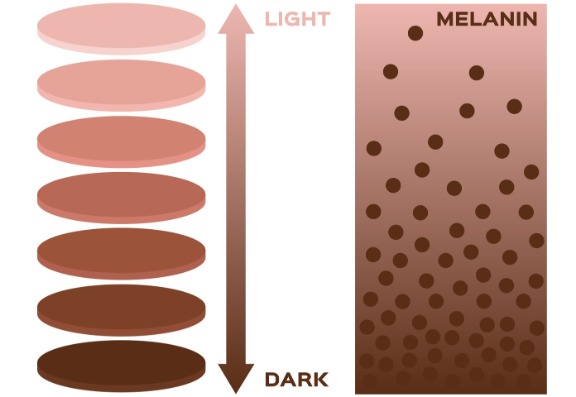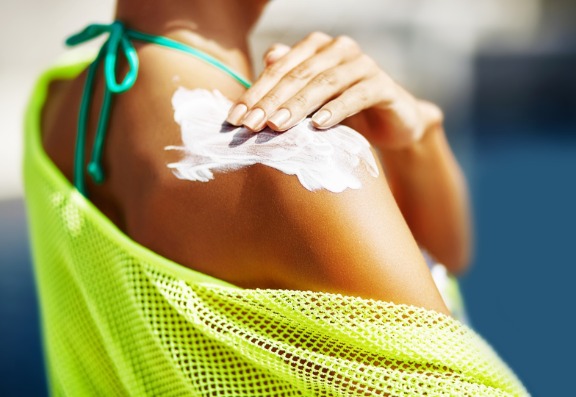
27
May
2010
The SPF of a sunscreen is a laboratory measure of the effectiveness of sunscreen - the higher the SPF, the more protection a sunscreen offers against UV-B (the ultraviolet radiation that causes sunburn).
There are two systems for SPF. American SPF numbers are double the SPF numbers on European products. An American SPF 20 sunscreen is the same as SPF 10 in Europe. It is not always clear on the packaging which system is being used.
The SPF indicates the time a person with sunscreen applied can be exposed to sunlight before getting sunburn relative to the time a person without sunscreen can be exposed.
This assumes constant solar intensity over the time period. The SPF is an imperfect measure of skin damage because invisible damage and skin ageing are also caused by the very common ultraviolet type A (wavelength 320 to 400nm), which does not cause reddening or pain.
Conventional sunscreen does not block UVA as effectively as it does UVB, and an SPF rating of 30+ may translate to significantly lower levels of UVA protection.
The Persistent Pigment Darkening (PPD) method is a method of measuring UVA protection, similar to the SPF method of measuring UVB light protection. Originally developed in Japan, it is the preferred method used by manufacturers such as L'Oreal.
The purpose of melanin is to absorb UV radiation and dissipate the energy as harmless heat, blocking the UV from damaging skin tissue.
UVA gives a quick tan that lasts for days by oxidizing melanin that was already present and triggers the release of melanin from melanocytes. UVB on the other hand yields a tan that takes roughly 2 days to develop because it stimulates the body to produce more melanin.

Could you explain for me - how UVA damages the skin in terms of ageing, and - is it UVA that can lead to cancerous cells?
UVA, UVB and UVC can all damage collagen fibres and thereby accelerate the ageing of the skin. Both UVA and UVB destroy vitamin A in the skin causing further damage. In the past, UVA was considered less harmful, but today it is known that it can contribute to skin cancer via indirect DNA damage (free radicals and reactive oxygen species). It penetrates deeply but it does not cause sunburn. UVA does not damage DNA directly like UVB and UVC, but it can generate highly reactive chemical intermediates, such as hydroxyl and oxygen radicals, which in turn can damage DNA. Because it does not cause reddening of the skin (erythema) it cannot be measured in SPF testing. Some doctors blame the absence of UVA filters in sunscreens for the higher melanoma risk that was found for sunscreen users.
UVB light can cause direct DNA damage. The radiation excites DNA molecules in skin cells, causing abnormal bonds to form, producing something called a dimer. When DNA enzymes come along to replicate this strand of DNA, it reads the dimer wrongly causing a mutation, which can result in cancerous growths. This cancer connection is one reason for concern about ozone depletion and the ozone hole. UVB causes some damage to collagen but at a very much slower rate than UVA.
Also, do you know if sunbeds are just solo UVA rays, is that why people can use them UVB is absent?
A sunbed emits typically 95% UVA and 5% UVB, +/-3% to produce a cosmetic tan.
I'd say 50-100 on each would be perfect. I'm not trying to do a really high-tech piece but I thought if people knew that SPF50+=PPD22, it might make people top up more often rather than thinking that would be enough coverage for a whole day you know?

Personally. I don't widely advise liberal everyday use of sunscreen (except in Skin type 1 and 11 who transmigrate to high UV areas such as Queensland or Arizona) if it is solely used to stay in the sun for a longer period.
I must say I am a bit unsure about their medical benefit outside the clinically demonstrated proven benefits against non-melanomatous skin cancers. However, one should be aware of several epidemiological studies, which actually indicate an increased risk of malignant melanoma after the use of sunscreen.
This may of course be related to the fact that sunscreen is used in areas of high UV penetration. Despite these studies, no medical expert except myself has issued recommendations to be somewhat cautious in the excessive use of sunblock. There are also many synthetic compounds in sunscreens associated with adverse health effects.
Remember, when you have too much sun your skin will tell you...it begins to burn!
In 2007 two studies by the CDC highlighted concerns about the sunscreen chemical oxybenzone (benzophenone-3). The first detected the chemicals in greater than 95% of 2000 Americans tested, while the second found that mothers with high levels of oxybenzone in their bodies were more likely to give birth to underweight baby girls. Some concerns have been raised regarding the use of nanoparticles in sunscreen, which theoretically could increase rates of certain cancers, or diseases similar to those caused by asbestos
However, my main concern is the use the use of sunscreen also interferes with vitamin D production. This chemical is protective against both heart attack and cancer and there is growing evidence sun may be the real cause of cardio-protection and not the mediterranean diet. There was a Vit D deficiency in Australia after a government campaign to increase sunscreen use. in fact, I would recommend spending small amounts of time in the sun without sun protection to ensure adequate production of vitamin D.
If you want to read more, the experts at Consulting Room really know what they're talking about and have put together some sunscreen FAQs just for you.
If you have more questions, you can use the sunscreen questions feature to talk to our panel of trained medical experts.
If you're keen to get started with any of these treatments right away then you're in luck - those clever folks also have a list of trusted, accredited sunscreen clinics in your area.
From facials, to peels, to tweakments - we ask the experts how to get the bro glow…
New survey releases shocking SPF facts about how the UK uses sunscreen...
Profhilo Body offers several key benefits that make it a sought-after treatment for those looking to revitalize their skin...
Hey, wait!
Before you go.....
Let's stay in touch, pop your details here and we'll send our editor's hand-picked updates on your fave subjects.